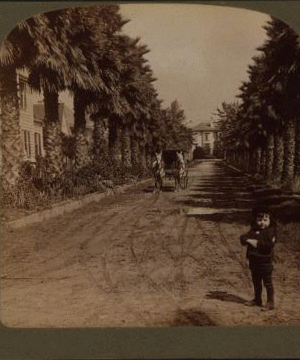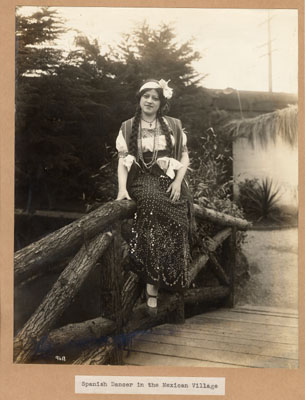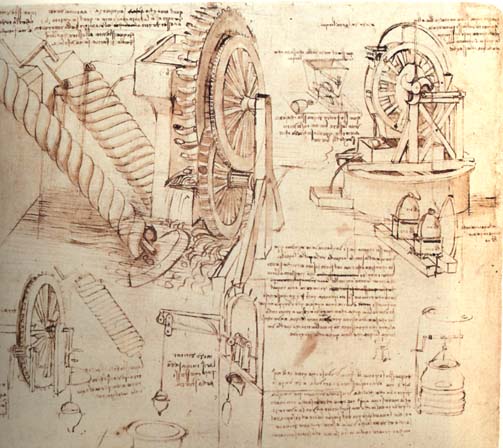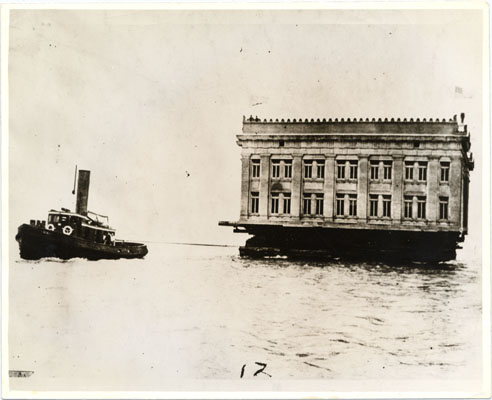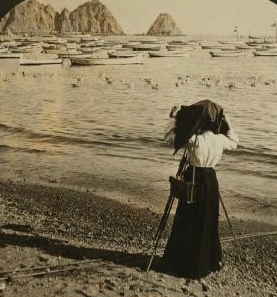The George Roeding family from Fresno visited the Panama-Pacific International Exposition. Among their snapshots of the PPIE was this photo of a little three-wheeled wicker cart. The cart is traveling along the Avenue of Palms, on its own power, in front of the Horticultural Building.
The Exposition provided various ways for tired visitors to get around the exposition grounds. You could pay a fare to get on an auto train or a miniature steam train and go where they took you. Or you could rent one of these "Miniature Electric Vehicles" and motor about wherever you wanted to go (within reason of course).
The electric wicker chairs, also called "Electriquettes", were not completely safe. However, they were very popular and it sounds as if it was worth the risk.




